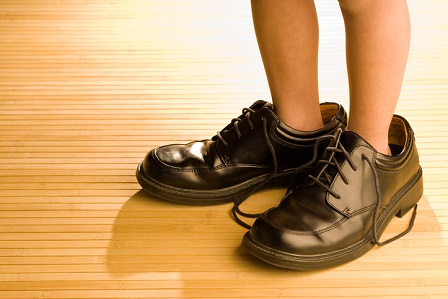People are often curious to know: At what age do your feet stop growing?
The story of how our feet grow and develop throughout our lives is quite fascinating – even if you’re not a podiatrist providing foot care for every age group!

Rapid Growth in the Early Years
The long bones in our feet start to grow, and our toes start to form long before we are born – in the third or fourth month of gestation.
During the first year of life outside of the womb, our feet are primarily influenced by hereditary factors, as well as applied pressures – which is why it is important not to constrict your baby’s feet with socks, booties or shoes that are too tight or rigid.
Between birth and the age of 4, our feet double in length, with growth of up to 10mm per year. So if it feels like your child is outgrowing their shoes long before they wear out, this is why!
By the age of 10, about 90% of girls have completed the majority of their foot growth, compared to about 80% of boys. This means that even though your child may still be at primary school, they are likely already wearing “adult” sized shoes.
There are noticeable changes to foot length between 9 and 11 years of age.
As the school years are a critical time in the growth and development of feet, it is a good idea to read our guide to children’s school shoes and/or have them professionally fitted (a service we provide at our podiatry clinic, in addition to stocking a range of quality shoes).

When do our Feet Stop Growing?
Feet usually stop growing a few years after puberty. In girls, the “normal” age for feet to stop growing is around 14 years, while in boys, it’s around 16.
However the final closure of growth plates in the feet occurs between 18 and 20 years of age.
Although technically your feet stop growing when you are a teenager, in actual fact your feet will change size throughout adulthood.
How Feet Change During Pregnancy
A classic example is what happens to women’s feet during pregnancy, when shoe size can change as much as half a size or more. This is due to:
- Pregnancy hormones relaxing the ligaments in the body in preparation for birth; and
- Increased body weight, which in turn reduces the arch height, thereby increasing the foot length and width.
There may also be some fluid retention which leads to swelling.
How your Feet “Grow” in Adulthood
As you get older, your foot shape and size will continue to change even though growth has finished. This is because your feet will flatten out and elongate with age – it’s estimated that most people over the age of 40 gain half a shoe size every 10 years or so!
Weight also impacts on the size and shape of your foot. So if at the age of 20 you weighed 80 kilograms and wore a size 9 shoe, chances are slim that you will able to fit the same shoes when you are 50 years old, and weigh 100 kilograms.
It’s important not to get hung up about the actual number or size on the box, next time you need to buy shoes; instead, concentrate on finding the best fit. Not only can brands be sized differently, but as you can now see, the size and shape of your feet can fluctuate as well.
And remember – if you have any concerns about how your child’s feet are growing and developing, you can always make an online booking or call our Redlands Podiatry Clinic on 3207 4736 to make an appointment.
